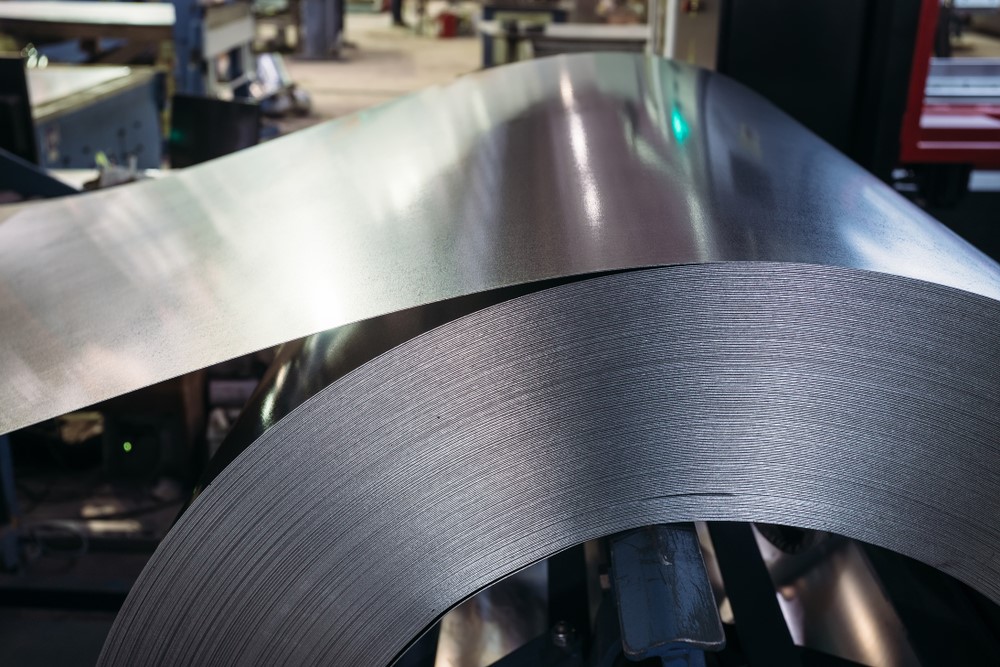There are almost no structural materials with a longer life expectancy than galvanized steel.
ASTM Standard A123 gives builders guidance on the expected time to first maintenance, the number of years galvanized steel will be in service before even the first 5 percent of the zinc coating needs to be renewed. In an industrial setting, time to first maintenance is 72 to 73 years. In a marine environment, time to first maintenance is 75 to 86 years. Galvanized steel in suburban settings is expected to last 97 years, and the galvanized product will not need recoating for over 100 years in a pristine, rural environment.
With chemical spills, severe pollution, and mechanical abrasion from industrial accidents and extreme weather, even galvanized steel can show its age. But the steel doesn’t have to go to the salvage yard. It can be regalvanized.
Why Is It Necessary to Regalvanize Steel?
There are some unmistakable signs that steel should be regalvanized.
Galvanized steel produced in the middle of the twentieth century can be reaching its expected time to first maintenance. If steel has been in service since the 1950s, it is probably time for a new zinc coating.
Sometimes the steel itself is relatively reactive to corrosive influences in the environment. The zinc coating on steel forms an abrasion-resistant alloy with the iron beneath it, but traces of silicon and phosphorus in the steel can affect chemical reactions in the galvanized steel’s zinc coating. The zinc on reactive steel can take on a gray, matte appearance. There is also a higher risk the galvanized coating will not continue to adhere to reactive steel if the steel is struck by strong force.
And there are times that regalvanizing is necessary because of irregularities in the coating of zinc when steel was taken out of the galvanizing kettle. These defects may not be noticed for years or even decades in some cases.
As a general rule, when galvanized steel begins to look flaky, it’s time to regalvanize.
What’s the process of regalvanizing?
The first step in galvanizing steel with a second coat of zinc is taking a very close look at the first coat of zinc. Experts in galvanizing take a look at the steel to determine the steps that may be necessary to renew the steel’s galvanizing. Then they may apply a chemical to remove zinc paint or the zinc coating applied to the steel in its first hot-dip process. Some galvanizers have a separate acid bath used specifically for this purpose.
Next it is essential to make sure the surface of the steel is completely free of grease, oil, mill scale, and rust and other metal oxides. The surface of the steel must be smooth and free of major defects. Cleaning steel is an essential step before the regalvanizing process, but it is not the only preparator step.
Next, the steel may be sent through a “pickling” process. This isn’t a treatment that is only used for regalvanizing steel. Much steel is pickled before its first trip through the galvanizing procedure.
The process of rolling molten steel when it is first produced creates multiple layers of iron oxide (rust). If the steel wasn’t pickled the first time it was galvanized, this acid treatment removes every trace of iron oxide rust) from the surface of the steel. The process of pickling requires choice of the right acid at the right temperature for the right amount of time. Over-pickling the steel can lead to over-application of zinc. But even after the pickling process, the steel has to be fluxed to keep it from rusting before the new coat of zinc can be applied. (There are ways to combine pickling and fluxing into a single step.)
What you need to do your part in the regalvanizing process.
It’s not enough to deliver steel to the galvanizing plant and expect good results. You need to communicate your tolerances for the size and strength of the steel you expect after regalvanizing. The process of pickling can reduce the thickness of the underlying steel slightly. This is almost never a problem unless you are dealing with extremely low dimensional tolerances.
It’s important to remember that galvanized bolts cannot be reused after they have been brought to tension in a steel structure and then taken out of service. Your galvanizer needs to know about all previously tensioned bolts. And you need to know that regalvanizing will not fill in any dents or dimples that existed in the steel before it was galvanized the first time.

